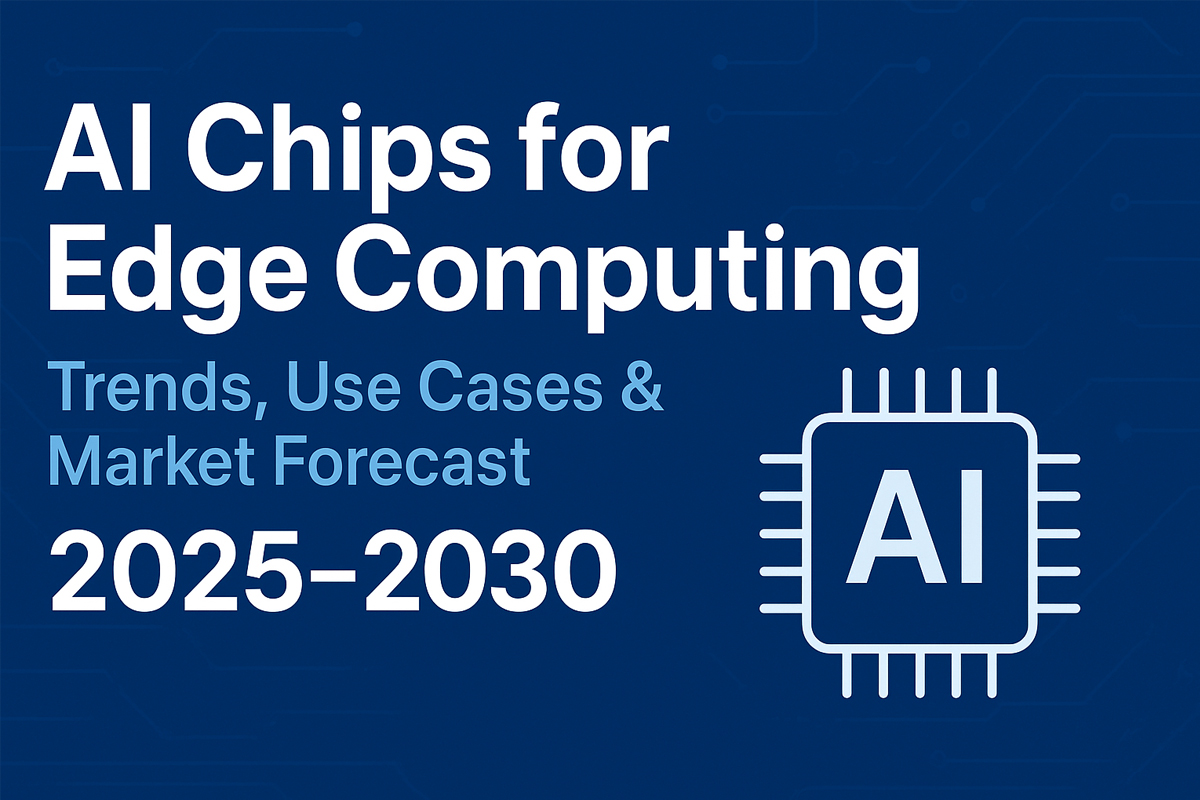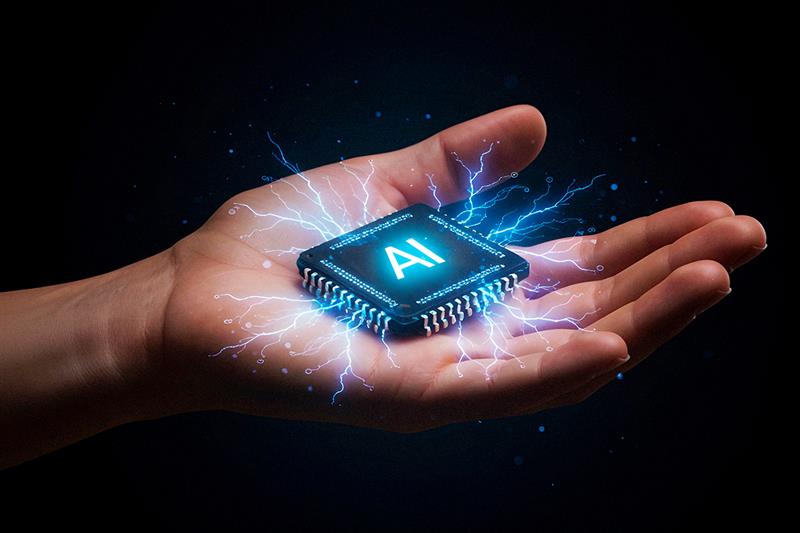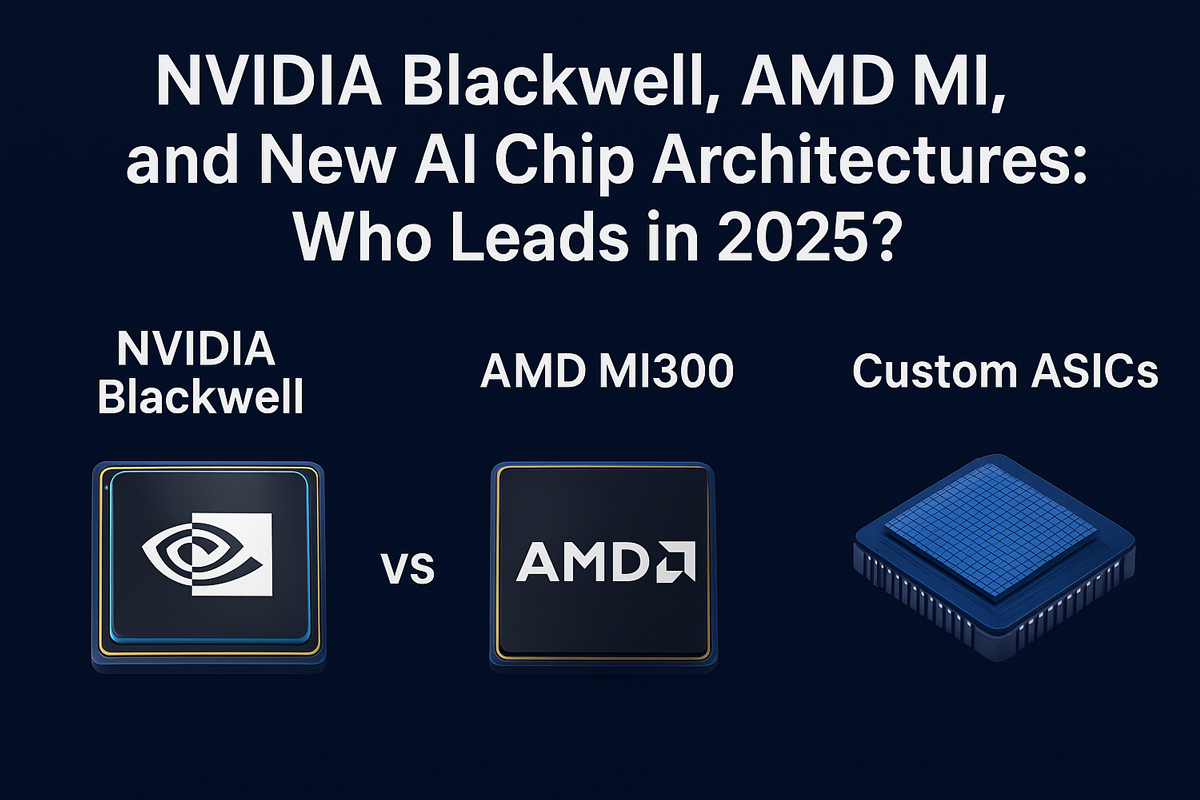In 2025, the race to dominate next-generation AI chip architectures has never been more intense. As artificial intelligence scales from cloud data centers to edge devices, hardware innovation is redefining the limits of performance, efficiency, and scalability. The battlefront is now clearly drawn between NVIDIA’s Blackwell chip, AMD’s MI300 AI chip, and a growing wave of custom ASICs developed by hyperscalers and startups.
So, who really leads the AI hardware game in 2025 — and why? Let’s dive deep into the architectures, benchmarks, and trade-offs that define the future of AI acceleration.
1. NVIDIA Blackwell Chip: The New Titan of AI Acceleration
Key Highlights:
- Up to 20 petaflops of FP4 performance per GPU
- Advanced tensor cores supporting FP8/FP4 precision for optimal AI workload balance
- Unified memory architecture for massive model scaling beyond 1 trillion parameters
- Deep integration with NVIDIA DGX GB200 systems and Grace CPU nodes for end-to-end HPC and AI synergy
Verdict: NVIDIA remains the market leader in AI chip architecture ecosystems, with unmatched software support via CUDA, TensorRT, and the NVIDIA AI Enterprise stack.
2. AMD MI300 AI Chip: The Challenger with a Hybrid Edge
Architecture Overview:
- 3D-stacked APU design, combining CPU and GPU chiplets in a single package
- Up to 192 GB of HBM3 memory and 5.3 TB/s memory bandwidth
- Optimized for inference, training, and HPC workloads simultaneously
- Fully compatible with ROCm (Radeon Open Compute) and PyTorch / TensorFlow integrations
In recent benchmarks, the AMD MI300 AI chip has demonstrated competitive training performance against NVIDIA’s H100 and early Blackwell previews — particularly in workloads emphasizing memory-bound operations.
Verdict: AMD’s hybrid approach offers excellent performance-to-cost and a strong alternative for enterprises seeking flexibility beyond the CUDA ecosystem.
3. Custom ASICs and Emerging AI Chip Architectures
Emerging Trends in Next Generation AI Chip Architectures 2025:
- Domain-specific accelerators (DSAs): Tailored for transformer and diffusion model workloads
- Chiplet-based designs: Modular architectures allow flexible scaling and reduced fabrication costs
- Photonics and memory-on-package (MOP): Reducing interconnect latency for next-gen AI chips
- RISC-V AI cores: Gaining traction for lightweight inference at the edge
4. The Market Outlook: AI Hardware in 2025 and Beyond
By 2030, analysts forecast:
- A $350 billion AI chip market, with over 40% share from hyperscaler in-house ASICs
- Rising adoption of edge AI hardware for autonomous vehicles, robotics, and smart manufacturing
- Growing collaboration between semiconductor foundries and AI startups for domain-optimized designs
Conclusion: The Real Winner in 2025
- NVIDIA Blackwell chip dominates large-scale AI training with a mature software stack
- AMD MI300 AI chip delivers balanced performance with better cost-efficiency and open-source freedom
- Custom ASICs push the boundaries of efficiency and specialization for hyperscale AI infrastructure





